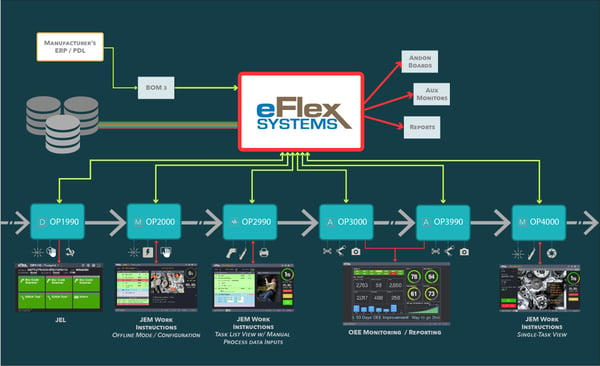How to choose the right digital work instruction software?
by George Jewell, on Apr 14, 2018 12:53:25 PM

Work instructions (WI) in the past and present are typically printed on paper and many times do not represent the current processes on the plant floor. It seems that these aids were more of a formality, used to provide training or answer questions as needed about proper processes and techniques. However, with increasing product variation and consumer demand for higher quality, accurate and real-time work instructions are no longer a formality but an important necessity. Furthermore, paperless work instructions can offer much more capability than paper saving. But where to begin? How to choose the right software to start your digital transformation? A few key features and functionalities of WI software that should be considered in the decision-making process are highlighted below.
Web-based and on the floor
Paperless or real-time work instructions should be available to the operator as they work through processes. Also, paperless solutions must be web based. This allows the instructions to be displayed on the floor with any device that supports a browser. Relatively inexpensive systems can then be placed at each workstation or cell. Additionally, instructions should immediately change when modifications are made and approved at the office level.
Instructions flow with the process
Instructions should not only allow user navigation for help but more importantly follow users as they work through station processes. As team members complete a task, the next instruction could show with a button. Operator displays could be set up as a multi-task view or single task view. However, more capable systems should also allow the instruction to sequence with timed steps or with feedback from devices such as barcodes, torque tools, vision systems, etc. The feedback should indicate pass/fail and the system should capture this data as well as task time.


Single Task WI View Multi-Task WI View
Collaborate with plant floor regarding improvements
Real-time feedback and cycle time information can be used to improve work instructions and processes. Work Instruction software must be able to capture critical production data and provide plant leadership with the tools they need to maximize productivity and quality output.
Integrate with ERP/MES/BOMs to determine build components and variables and ensure proper information is shown
Manufacturers do not typically have the luxury of making just one model or product. At times there are thousands of options. With that, work instructions should react as BOMs change for a particular model or serial number. Instructions from one to the other can be very different or require subtle changes which are easy to miss during production. Real-time, work instruction software should be capable of displaying individual tasks with different instructions based on a BOM or model difference. I would suggest this is one of the most important aspects of work instructions. Team members typically understand processes after some time. However, mistakes are often made with changeover or when individual serial numbers contain many options. From this, the software should be capable of easily pulling from an ERP or MES scheduling system.

Connect to tooling, provide error proofing and grow with your needs
As users begin to use work instruction software and particularly in real-time with the process, they typically realize the need to do more error proofing. Devices such as torque tools, barcode readers, scales, gauges, vision systems, etc., should interlock to the software to control the sequence, gather and present data, and control the tool based on product variation.
Link current documentation via URL
Most manufacturers have a system with developed work instructions. The real-time instruction solution should not only allow document management on its own but also allow for easy connection via URL to the current instruction. As the instruction changes it would automatically reflect on the plant floor.